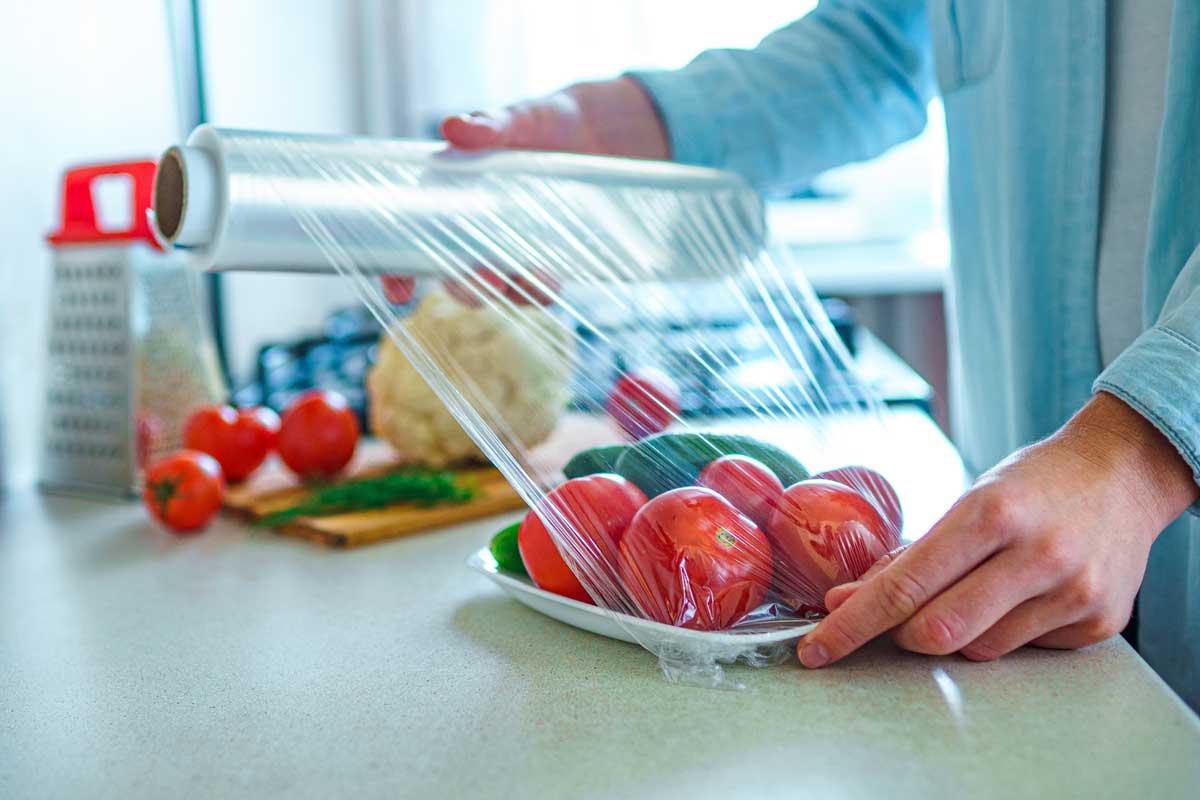How to use plastic wrap?
2024-01-05

Plastic wrap is a plastic packaging product, usually made by polymerization using ethylene as the masterbatch. plastic wrap can be divided into three categories: the first is polyethylene, referred to as PE; the second is polyvinyl chloride, referred to as PVC ;The third type is polyvinylidene chloride, referred to as PVDC.
Microwave oven food heating, refrigerator food preservation, fresh and cooked food packaging and other occasions, it is widely used in the field of food packaging in family life, supermarkets, hotels and restaurants and industrial production.
How to identify plastic wrap
In supermarkets, there are a lot of plastic wraps. When buying, many people may look at the brand and price, but few people pay attention to the ingredients for preservation.
There are three most common plastic wraps on the market: PE (polyethylene), PVC (polyvinyl chloride) and PVDC (polyvinylidene chloride).
Due to different material properties, the dosage of plasticizer required is PVC>PVDC>PE, which means that PVC plastic wrap contains the most plasticizer.
PE plastic wrap uses food-grade PE resin that meets the requirements and does not add plasticizers. PVDC plastic wrap is also similar. Therefore, experts suggest that PE and PVDC should be the first choice when using plastic wrap.
Plasticizers are harmful substances. They are additives that increase the softness of materials or liquefy them. Its toxicity is much higher than that of melamine. It can cause a decrease in human immunity, harm male reproductive capacity and promote premature puberty in women. Long-term ingestion of large amounts may cause liver cancer.
How to choose plastic wrap
- When purchasing plastic wrap, the packaging has the "QS" logo, number and manufacturer's detailed address, and the plastic wrap marked with PE or polyethylene can be used with confidence
- According to the color identification, the yellowish one is the PVC plastic wrap, and the white one is the PE plastic wrap
- Rub the plastic wrap by hand, the PE plastic wrap is easy to open, while the PVC plastic wrap is not easy to unfold
- Buy PE plastic wrap in regular supermarkets, most of the products sold in farmers' markets are PVC plastic wrap
How to use plastic wrap
- When purchasing cooked food and bulk food packaged in plastic wrap in supermarkets, you should immediately change the packaging when you return home and store them in PE plastic bags (boxes), ceramics, glass, and stainless steel containers.
- When heating in a microwave oven, it is best to take off the plastic wrap to prevent harmful chemicals from penetrating into the food during the heating process.
- When using plastic wrap that is “microwave safe”, open a corner of the plastic wrap before heating to allow water vapor to leak out to prevent the plastic wrap from exploding due to gas expansion.
- Plastic wrap is only suitable for short-term storage. Pay attention to the storage period, such as 1 to 2 days for green vegetables, 2 days for seafood, 1 to 2 days for vegetable broth, and 3 days for cooked food.
Foods that are best not to use plastic wrap
- Watermelon: Wrapping watermelon in plastic wrap and then storing it will speed up the rot of watermelon. Bacteria and microorganisms already exist in the watermelon after it is cut, and the plastic wrap has poor air and water permeability, causing bacteria to multiply and deteriorate faster.
- Carrots, cucumbers, beans: If these foods are wrapped in plastic wrap and stored, the vitamin C contained in them will be reduced.
- Delicatessen: Delicatessen, especially meat, if wrapped in plastic wrap and then stored, can easily cause the chemical components in the plastic wrap to blend into the food, thus affecting your health.
How to preserve food scientifically?
- Fruits and vegetables: Wrap in plastic wrap and refrigerate. Most fruits can be placed in the cold compartment of the refrigerator. However, some tropical fruits, such as bananas, mangoes, pineapples, papayas, etc., cannot be placed in the refrigerator to avoid freezing.
- Raw meat and seafood: It is best to isolate and freeze. Before placing all raw meat products in the freezer, they should be divided into portions according to usage, carefully packaged in plastic bags or plastic wrap, and then placed in the freezer to prevent moisture loss.
- Dried goods and fruits: dry and store in a sealed container. Uneaten bulk dried


